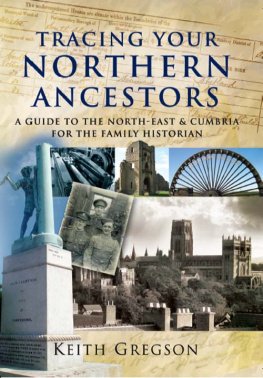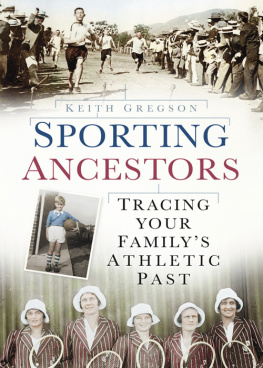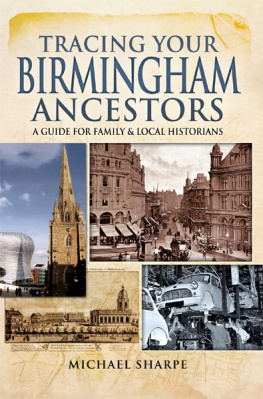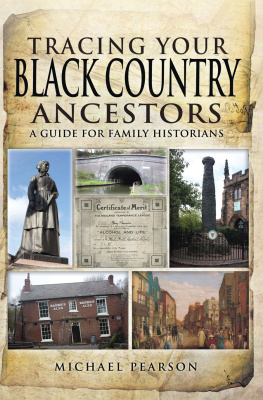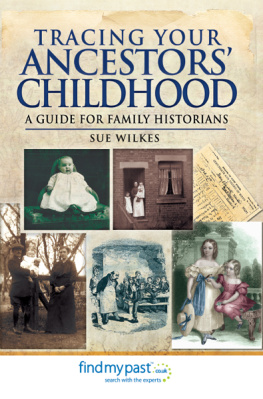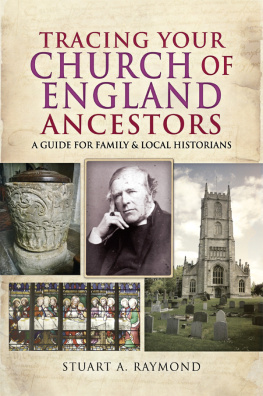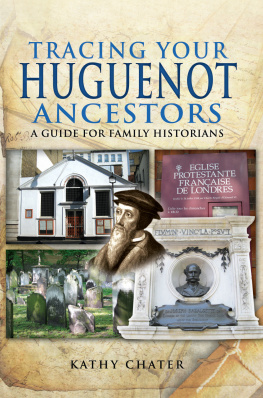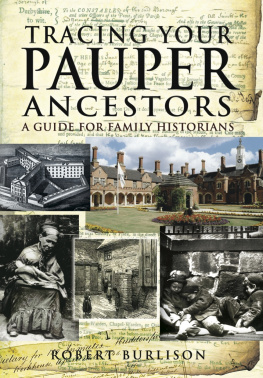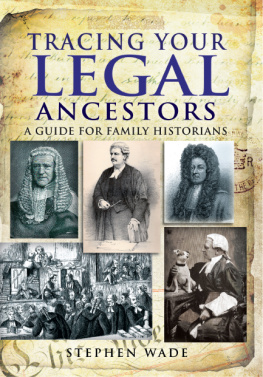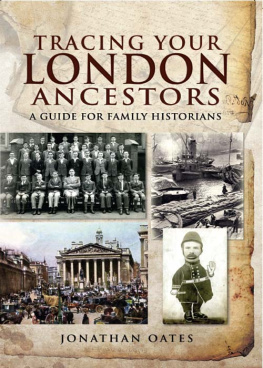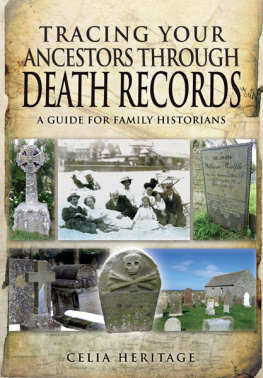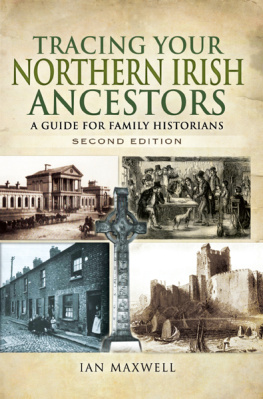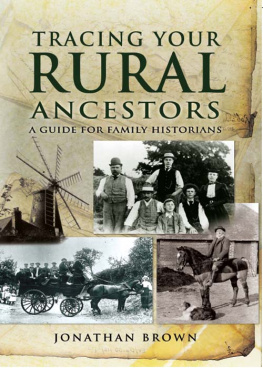

First published in Great Britain in 2007 by
PEN & SWORD FAMILY HISTORY
an imprint of
Pen & Sword Books Ltd
47 Church Street
Barnsley
South Yorkshire
S70 2AS
Copyright Keith Gregson 2007
Unless otherwise stated, photographs are from the Authors collection.
ISBN 978 1 84415 597 2
Digital Edition ISBN: 978 1 84468 323 9
The right of Keith Gregson to be identified as Author of this Work has been asserted by him in accordance with the Copyright, Designs and Patents Act 1988.
A CIP catalogue record for this book is available from the British Library.
All rights reserved. No part of this book may be reproduced or transmitted in any form or by any means, electronic or mechanical including photocopying, recording or by any information storage and retrieval system, without permission from the Publisher in writing.
Typeset in Palatino and Optima by
Phoenix Typesetting, Auldgirth, Dumfriesshire
Printed and bound in England by
CPI UK
Pen & Sword Books Ltd incorporates the Imprints of
Pen & Sword Aviation, Pen & Sword Maritime, Pen & Sword Military, Wharncliffe Local History, Pen & Sword Select, Pen & Sword Military Classics and Leo Cooper.
For a complete list of Pen & Sword titles please contact
PEN & SWORD BOOKS LIMITED
47 Church Street, Barnsley, South Yorkshire, S70 2AS, England
E-mail:
Website: www.pen-and-sword.co.uk
CONTENTS
This book is dedicated to the memory of Gill Shirvinton (19542006)
a real North Country Lass in every respect.
A North Country maid
Up To London had strayed
Although with her nature, it did not agree
She wept and she cried
Then she rang her hands and sighed
How I wish once again in the north I could be
Where the oak and the ash
And the bonny ivy tree
They are all growing greener
In my North Country
(As taught at St Georges Primary School, Kendal c.1955)
PREFACE
W riting about ancestry in a region as widespread as the far north of England is not an easy task; even definition of its geographical boundaries can cause a headache.
The region, as presented here, stretches from the Anglo-Scottish border in the north to areas round the northern borders of the ancient counties of Lancashire and Yorkshire in the south. Its western flank runs from the Morecambe Bay estuary up the western coast along the southern coastline of the Solway Firth to the western end of the Scottish border. The eastern boundary runs from the eastern end of the Scottish border to an area just south of the River Tees.
Using the current political arrangements, this includes Cumbria in the North-West, Modern County Durham and Northumberland, Tyneside, Wearside and the Tees Valley in the North-East.
This is a region with which I am very familiar despite a birth registered in London (where I subsequently lived for a few months). Otherwise I am in every sense a North Country man, driven perhaps by the accident of my birth into a search for my northern roots.
Both my mother and my fathers father started life in Barrow-in-Furness (Cumbria), where my father was also brought up. My mothers father was born in Millom (Cumbria) and his wife in South Shields (Tyneside). My own early years were spent in Kendal and my teenage years in Carlisle (both Cumbria). I then crossed the Pennines to go to university in Newcastle (Tyneside), taught history in Hartlepool (Tees Valley) and have lived in Sunderland (Wearside) for over thirty years. My oldest son is now settled in Alnwick (Northumberland), while my mother and other close relatives are on the south Solway coast (still Cumbria).
Although I reckon this is a good pedigree for someone writing about the North Country and ancestry, I am aware of a tendency to draw on evidence and examples connected to those places with which I am most familiar. I hope that this doesnt blur the broader picture and that fellow family historians can draw on the examples I use to achieve success where their own geographical areas of interest differ slightly from mine.
As a songwriter, I was tempted, some years ago, to put my love of my almost native land into verse. The chorus ended:
Of Kendal and Carlisle, Tweed, Tees, Wear and Tyne
Of the mountains, the lakes and the moorlands so fine
From the backbone of England see a country of mine
Which I wouldnt exchange for another
This may be slightly treacherous coming from one with Wembley written in large letters on his birth certificate but it is true nevertheless.
With any luck, what follows may assist fellow northerners, firmly rooted or not, to discover their ancestors and, equally importantly, in my estimation, to build up a picture of how they may have lived, worked and played.
Keith Gregson
Sunderland
2007
INTRODUCTION TO THE REGION
I f you are not familiar with the north of England, you will probably be unaware of the controversial nature of the title of this book and there are a number of issues here. First, some will want to know how there can be a book with Northern in the title that does not deal with modern Lancashire or Yorkshire? The answer is simple. This book is one in a series of guides where these two counties will stand on their own. As they are geographically south of the region which includes both the North-East and Cumbria then there is no harm in that region becoming exclusively Northern. Second, the placing of the North-East and Cumbria under one umbrella may raise a few eyebrows. This is not necessary. The media recognises this region, both in television and newspaper coverage. There is also a natural unity across the region, which should become more evident later in the book.
Take the Roman Wall or Hadrians Wall, for example, constructed almost two thousand years ago. Commonlyregarded as marking the fixed northern limit of the Roman Empire, it stretched from the Solway in the west almost to the mouth of the Tyne in the east. Although it was a frontier rather than an effective fortified barrier, its influence and area of protection stretched southwards for a considerable distance.
Later, as the medieval period came to a close, the Scottish border as we now know it began to be fixed inplace. Prior to this, the whole area had been wild, and a common fear of attack from north of the border gave it a form of unity. Hartlepool, on the south-eastern fringe of the region, was frequently raided by Scots, and at least one Westmorland market-town in the far south-west (Kirkby Stephen) had its streets developed specifically in a pattern to keep out such invaders.
Even as the border fell into place in the sixteenth century, this remained a difficult region to govern, as families and their feuds reigned supreme. The official law was overseen in three marches: the Western Marches, based on Carlisle, the Middle, based on Hexham, and the Eastern, based on Newcastle. Although officials here frequently failed to see eye to eye, the enemy was often a common one throughout the great days of the border reivers, or rustlers.
So this is The North, signposted all the way up the A1 and M6 until it disappears into Scotland, also described as the Far North or even, for simplicity, the North Country. North Country is certainly a phrase used of the region, or parts of it, in times past. It appears in songs such as The North Country Maid, one of the most common versions of which is tied directly to the southern part of modern Cumbria.
Next page
